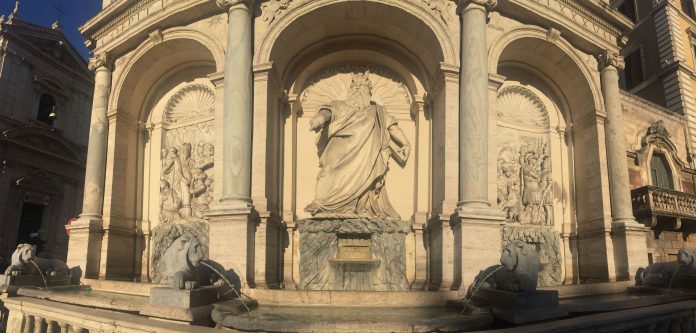
Sean Hull
Special to the Ledger
[Editor’s note: This is the second in a series of study abroad column entries from student Sean Hull.]
Prague is known for a few things: the grand architecture of the Old Town and Prague Castle, the ubiquitous red roofs, the majesty of the Vltava and the beauty of the Charles Bridge. However, the true marvel in my eye has been the city’s incredible public transit system.
Comprised of three underground metro lines that extend in all cardinal directions from the center of Prague and countless streetcars to fill in the blanks, you can get anywhere you need to in the city cheaply and quickly. The convenience and simplicity of the system starkly contrasts with Kansas City’s meager and confusing attempt at offering public transport, an issue the city should remedy to improve public life and accelerate the city’s growth.
The most amazing thing about Prague’s public transport system is that it’s not unique. Nearly every European capital has an efficient public transport system and most mid-sized cities do as well. The Prague metro is only unique in that it’s not covered in antifascist graffiti like Munich and Rome.
The obvious advantage a public transport system has for a European capital is that it makes it easier for tourists to travel around the city. On the metro map of Prague, all the major spots like the Charles Bridge, Wenceslas Square, Old Town Square and the Castle are clearly marked with a caricature. An expanded streetcar system in Kansas City would achieve much of the same effect, connecting the city’s sites and entertainment districts.
Currently the singular downtown line connects two major hubs of entertainment and commerce in the city, Union Station and the River Market. Expanding the streetcar further down Main Street, towards the Plaza and the UMKC campus would connect the majority of the entertainment districts of the city, creating a more walkable and enjoyable city. But there are concrete examples of improvements to public safety as well.
Though not a direct comparison for Kansas City, which is going from relatively nonexistent public transportation to a full system, Washington D.C. proved that expansion of public transportation options lower rates of alcohol related crimes. In 2007, D.C. expanded the hours of operation of their underground rail system from midnight to 3 a.m. and saw a reduction in both DUI arrests and alcohol related fatal driving incidents by as much as 40 percent, according to a study in 2009 by Cornell University.
Drunk driving is a major problem in the metro and police departments here have responded by increasing checkpoints, ironically often on Main Street, where an expanded system would run. The correct way to address drunk driving is by providing safer alternatives, not by increasing the threat of punishment.
Prague’s metro system runs 24/7 in some capacity, ensuring that citizens always have a safe way to get to work, have fun, and to get home. Expanding in Kansas City would also make the city more socially and economically equitable, allowing people without cars to expand the areas they can seek jobs and entertainment.
I’ll miss many things about Prague, but it’s hard to beat the beautiful practicality of the metro system. Hopefully Kansas City will lead American cities in the quest for more functional transportation.





















